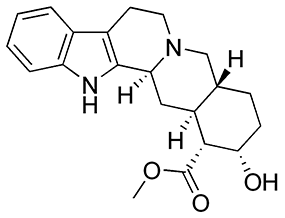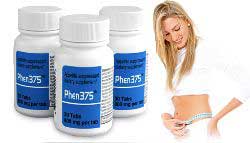 Yohimbine is a good example of an ingredient that divides the supplement-savvy community. Derived from the bark of a plant bearing its parent name – Pausinystalia Yohimbe – this compound started doing the rounds in a completely different department to fat-loss and weight management.
Yohimbine is a good example of an ingredient that divides the supplement-savvy community. Derived from the bark of a plant bearing its parent name – Pausinystalia Yohimbe – this compound started doing the rounds in a completely different department to fat-loss and weight management.
Initial research findings implied Yohimbine might have found its home amongst the testosterone boosters on the shelves of supplement stores.
However, when it failed to reliably replicate the results in further trials, it took a considerable nose dive in popularity. More recently, it has performed somewhat of a Phoenix manoeuvre and risen from the ashes with a new guise: fat-burner extraordinaire.
There are precautions to take with Yohimbine supplementation though, as you will discover, and while that is the case for nearly everything natural or synthetic that we consume, this one needs to be handled with care.
What is Yohimbine?
 The bark of a tree most commonly found in Central America and Africa called Pausinystalia yohimbe contains a type of alkaloid, which is Yohimbine. The substance has been investigated for several medical applications, including erectile/sexual dysfunction, testosterone boosting, interaction with seratonin pathways and associated re-uptake inhibition, PTSD (Post Traumatic Stress Disorder) treatment, depression treatment, blood pressure regulation and now of course fat loss.
The bark of a tree most commonly found in Central America and Africa called Pausinystalia yohimbe contains a type of alkaloid, which is Yohimbine. The substance has been investigated for several medical applications, including erectile/sexual dysfunction, testosterone boosting, interaction with seratonin pathways and associated re-uptake inhibition, PTSD (Post Traumatic Stress Disorder) treatment, depression treatment, blood pressure regulation and now of course fat loss.
Yohimbine has since been found not to help all of these aspects of human health, though the clinical trials and research continues.
How Does Yohimbine Increase Fat Loss?
Perhaps the most interesting thing about Yohimbine’s association with increased fat loss is that it seems able to target specific areas of the body. Fat-burning lore sort of precludes the notion that individual sites of fat storage can be targeted, but this might be limited to fat-burning achieved through training. Certainly there is no real evidence to suggest that an abdominal-focused workout is going to burn abdominal fat.
However, bio-chemical responses can be different when we introduce exogenous substances. Yohimbine appears to be able to target stubborn areas of fat, like love-handles and mid-section in men and thighs and buttocks in women, because those tissues are more heavily populated by the receptors it acts through.
Those receptors are known as the Alpha-2-Andrenergic receptors, yohimbine can interact with them in a way which increases levels of noradrenaline. Elevation in heart rate, arousal and anxiety are the main effects associated with a rise in noradrenaline levels. In terms of fat-loss, the high concentration of the A-2-A receptors in areas of fat storage appears to be one of the attenuating factors.
The alpha receptors may actually contribute to increased fat-storage, so when yohimbine acts by blocking them, there is more adrenaline left to antagonize the beta receptors – those that promote lipolysis, or fat-burning, via thermogenesis and cyclic adenosine monophosphate activity (see Coleus Forskohlii Ingredient Profile for explanation of cAMP). The process is several orders of magnitude more complicated than this but that explanation should give you the gist.
Other Uses for Yohimbine?
While there is little evidence to support Yohimbine’s use as a testosterone booster, some men now use it reliably to combat sexual/erectile dysfunction. This can be a simpler option than trying to get a prescription from a doctor, not to mention for some guys it is more discrete.
As already stated, though, neither the bark Yohimbe, nor Yohimbine have been shown to elevate testosterone levels.
Is Yohimbine Safe?
 Unfortunately, this may be the most important section of this article. Yohimbine is definitely an amber-light in our opinion. In other words, proceed with caution.
Unfortunately, this may be the most important section of this article. Yohimbine is definitely an amber-light in our opinion. In other words, proceed with caution.
There are several potential side effects from supplementing with this ingredient, so whatever you decide to do, we’d recommend starting at the lower end of the dosage spectrum.
Yohimbine’s exacerbation of anxiety levels is one of the chief concerns, especially for people pre-disposed to anxiety disorders or panic attacks. Also, it can elevate heart rate and so must be used with extreme caution in conjunction with any other stimulants.
It goes without saying that Yohimbine should not be used alongside any other medication, and you should get an opinion from a doctor if you are at all unsure about using it.
Recommended Dosage
Reliable sources of information regarding this supplement recommend the daily dose be split in to two smaller doses ranging from 2.5 to 7.5 mg each. This gives a maximum daily dose of 15mg, though we re-iterate that you should start at the lower end of that spectrum, regardless of your experience with stimulants.
Alternative Supplements
 There are a variety of supplements that have been developed to burn fat, not too many of which include Yohimbine in the blend. This may be a good thing until more is known about this ingredient. In the meantime, there are plenty of supplements we have reviewed on this website that we would recommend currently. Follow the link below to read about the most recommended supplements on the market.
There are a variety of supplements that have been developed to burn fat, not too many of which include Yohimbine in the blend. This may be a good thing until more is known about this ingredient. In the meantime, there are plenty of supplements we have reviewed on this website that we would recommend currently. Follow the link below to read about the most recommended supplements on the market.
Click here to read about the top fat-burners and slimming supplements

Be the first to comment